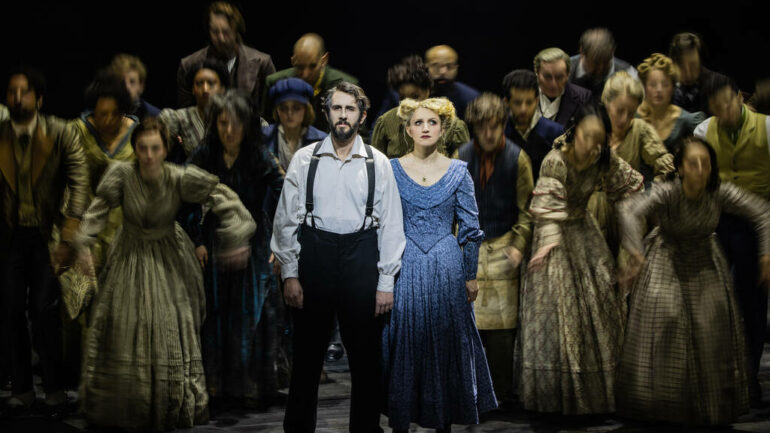So good... like you
Listeners:
Top listeners:
00:00
00:00
chevron_left
-
play_arrow
NGradio So good... like you
In a letter to its members sent this morning, the Academy of Motion Picture Arts and Sciences (AMPAS) listed three changes approved by its Board of Governors.
1. A three-hour Oscars telecast
We are committed to producing an entertaining show in three hours, delivering a more accessible Oscars for our viewers worldwide.
To honor all 24 award categories, we will present select categories live, in the Dolby Theatre, during commercial breaks (categories to be determined). The winning moments will then be edited and aired later in the broadcast.
2. New award category
We will create a new category for outstanding achievement in popular film. Eligibility requirements and other key details will be forthcoming.
3. Earlier airdate for 92nd Oscars
The date of the 92nd Oscars telecast will move to Sunday, February 9, 2020, from the previously announced February 23. The date change will not affect awards eligibility dates or the voting process.
The 91st Oscars telecast remains as announced on Sunday, February 24, 2019.
There’s an important through-line, here. All three of these changes are about ratings — the Nielsen kind, not the MPAA kind. The Academy is determined to reverse a trend of shrinking viewership to its annual telecast.
(Some context, here: This year’s Oscars, in March, were watched by 26.5 million people — which is, let’s be clear, a huge ratings number, second only to the Super Bowl. But! That number was down 20% from the year before, and represents the least-watched Oscars telecast in history — or at least since Nieslen boxes have been a thing.)
We’ll address points 1 and 3 in a bit, but it’s point 2 — the new category for popular film — that’s getting people talking today.
By creating a new category for “outstanding achievement in popular film,” the Academy is very likely attempting to ensure that the broadcast will feature movies — and actors, and directors — that many people will be not just familiar with, but passionate about. They want those eyeballs. Those (in the case of films like Black Panther, say) those nerdy, nerdy eyeballs, and the rooting interests they represent.
They’ve made similar allowances in the past. The expansion of best picture nominees from five to (as many as) ten, which was introduced at the 82nd Academy Awards held in March 2010, was widely regarded as the Academy’s attempt to correct for the fact that The Dark Knight and other popular, genre fare tended to get shut out of that category.
Critics of this latest move point out, rightly, that there’s already an award for being a popular film — box office grosses. The Oscars are meant to award artistic excellence in film, even if they seem too-often content to award excellence in Oscar campaigning — so why a separate category that can’t help but be seen as an also-ran, a consolation prize? And what criteria will be used to determine whether a film qualifies as “popular?” These aren’t questions to which we have answers, yet.
The Academy has recently made much-lauded moves to diversify and expand its membership, which would theoretically lead to a corresponding diversification and expansion of the kind of films that get nominated for, and awarded, Oscars.
Today’s announcement seems like a decidedly inelegant gambit to accelerate, or perhaps do an end-run around, that process, and all for the purpose of Nielsen ratings.
Now, to point 1: By promising to bring the broadcast in under three hours, the Academy is seeking to address the chief, perennial criticism lobbed at it by critics, the public, and late-night comedians — namely, that the Oscars telecast is a bloated, overlong exercise in Hollywood navel-gazing.
The Academy has made this promise before, of course. But they’ve sought to address it, in years past, by zipping through the technical awards (which are held and taped days before the main Oscars telecast) and hectoring presenters to keep their acceptance speeches pithy.
What they’re proposing now is different — they’ll keep handing out awards without a break, even during commercials. (They don’t specify which categories will be shunted to slots that won’t be broadcast live, but if you’re, say, a Hollywood sound editor or production designer, it might be best to start mentally preparing and managing your family’s expectations now.) The Academy stresses that it will tape and edit those acceptance speeches on the fly, and insert them into the broadcast at some point.
And as for point 3 of the Academy’s letter — that bit about broadcast date. They’re scooching up the broadcast a couple weeks earlier in February — but not until the 2020 telecast. So the upcoming Oscars will still be held on Sunday, February 24th, 2019 as planned — but the year after that, the broadcast will fall earlier in traditional awards season. This decision will likely affect the timing of other awards, and the announcement of that year’s Oscar nominees — no Hollywood agent is going to happily agree to cutting the time allotted for Oscar campaigns two weeks shorter.
All three of these changes, Nielsen-focused as they are, may seem puzzling … until you remember that the Academy’s day-to-day activities depend, at least in part, on the sale of TV rights to the Oscars broadcast.
Source: npr.org
Written by: New Generation Radio
Similar posts
ΔΗΜΟΦΙΛΗ ΑΡΘΡΑ
COPYRIGHT 2020. NGRADIO





















Post comments (0)